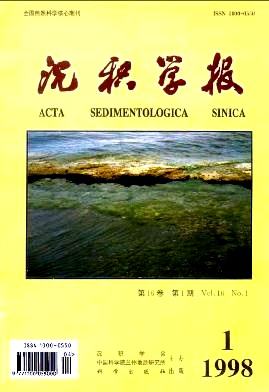Internal-tide Deposits of the Late Ordovician in Tonglu,Zhe jiang
- Received Date: 1997-03-26
- Rev Recd Date: 1997-04-30
- Publish Date: 1998-03-10
-
Key words:
- internal-tide deposits /
- couplet /
- symmetrically graded sequence /
- sedimentary fades /
- Late Ordovician
Abstract: Oceanographic studies more than 30 years revealed the existence of internal tides and internal waves indeep-water , however , internal-tide deposits were not recognized and studied systematically in the stratigraphcrecord until Gao Zhenzhong and K. A. Eriksson studied Ordovician deep-water sediments in the central Ap-palachians of the USA in the early 1990s. The term of internal-tide deposits was introduced for the first timein their paper. Two facies were recognized in the Ordovician of the Fincastle area,Appalachians:(1) bidirec-tional cross-laminated very fine grained sandstone facies,and (2)unidirectional cross-bedded and cross-lami-mated medium-to fine-grained sandstone fades. Recently, internal-tide deposits were first found in the Upper Ordovician in the Tonglu area, ZhejiangProvince,which are similar to that found in Appalachians in some sedimentary characteristics but also havesome marked difference from that in Appalachians. During the late age of Late Ordovician the Tonglu areawas located on the southeastern slope of a deep-water basin. The internal-tide deposits described in this paperwere found within the Upper Ordovician Yankou Formation,which consists of a succession of thin alternatelayers of sandstones and mudstones. This set of thin alternate layers displayed clear rhythmicity and could beclassified into many sequences from fine-grained to coarse-grained,and to fine-grained again upwards. Eachsequence consists of more than ten or tens of couplets of sandstones and mudstones with 0. 2-1 m in thick-ness and could be refered to as a symmetrically graded couplet sequence. This kind of internal-tide depositswith this sequence could be called as a rhythemic thin alternate layer facies of sandstone and mudstone,whichformed in deep-water slope environment and should probably be the product of internal tide sedimentation.Palaeoslope dipping towards northwest and southeast ward and northwest ward sedimentary structures indi-cate that the internal tide currents flew mainly alternatively up and down on the slope. Based on the study,theinteranl-tide deposits were inferred to be formed in open slope where there was a longer relative static period(the period of slack water)during tidal current reversals,so mud-size materials could deposit and form muddybeds. The formation of each couplet of sandstone and mudstone might be the result of diurnal or semidiurnaltide. But the formation of symmetrically graded couplet sequence might be the result of periodical change ofspring tide and neap tide.
| Citation: | He Youbin, Gao Zhenzhong, Li Jianming, Li Weifeng, Luo Shunshe, Wang Zezhong. Internal-tide Deposits of the Late Ordovician in Tonglu,Zhe jiang[J]. Acta Sedimentologica Sinica, 1998, 16(1): 1-7. |






 DownLoad:
DownLoad: